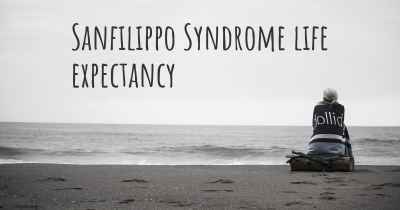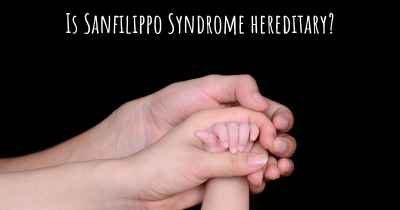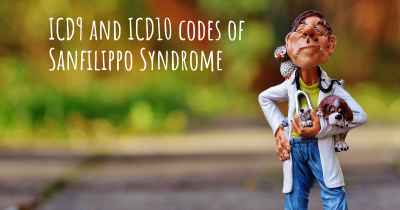Living with Sanfilippo Syndrome. How to live with Sanfilippo Syndrome?
Can you be happy living with Sanfilippo Syndrome? What do you have to do to be happy with Sanfilippo Syndrome? Living with Sanfilippo Syndrome can be difficult, but you have to fight to try to be happy. Have a look at things that other people have done to be happy with Sanfilippo Syndrome

Living with Sanfilippo Syndrome
Sanfilippo Syndrome, also known as mucopolysaccharidosis type III (MPS III), is a rare genetic disorder that affects the body's ability to break down certain sugars. This leads to the accumulation of harmful substances in the body, causing progressive damage to various organs and tissues. Living with Sanfilippo Syndrome can be challenging, but with proper care and support, individuals with this condition can lead fulfilling lives.
Medical Management
Managing Sanfilippo Syndrome requires a comprehensive approach involving medical professionals, caregivers, and the affected individual. Regular medical check-ups are crucial to monitor the progression of the disease and address any emerging complications. It is important to work closely with a team of specialists, including geneticists, neurologists, and pediatricians, who can provide tailored treatment plans.
Supportive Care
Supportive care plays a vital role in enhancing the quality of life for individuals with Sanfilippo Syndrome. This includes addressing symptoms and managing associated conditions. Physical and occupational therapy can help maintain mobility and improve motor skills. Speech therapy may be beneficial for individuals experiencing speech and communication difficulties. Additionally, assistive devices and adaptive technologies can aid in daily activities.
Education and Communication
Education is essential for individuals with Sanfilippo Syndrome to reach their full potential. Early intervention programs and specialized educational settings can provide tailored learning experiences. It is important to communicate with teachers, therapists, and other professionals involved in the individual's education to ensure their specific needs are met. Open and ongoing communication is key to addressing challenges and adapting strategies as the disease progresses.
Emotional Support
Living with Sanfilippo Syndrome can be emotionally challenging for both the affected individual and their caregivers. It is crucial to seek emotional support from family, friends, and support groups. Connecting with other families facing similar challenges can provide a sense of community and understanding. Counseling or therapy can also be beneficial in navigating the emotional impact of the disease.
Nutrition and Lifestyle
A well-balanced diet is important for individuals with Sanfilippo Syndrome. Consultation with a registered dietitian can help develop a nutrition plan that meets the specific needs of the individual. It may be necessary to modify the diet to accommodate any swallowing difficulties or gastrointestinal issues. Regular exercise, within the individual's capabilities, can help maintain muscle strength and overall well-being.
Research and Clinical Trials
Staying informed about the latest research and clinical trials is crucial for individuals with Sanfilippo Syndrome. Clinical trials offer potential access to experimental treatments and therapies that may slow down the progression of the disease. Engaging with advocacy groups and research organizations can provide valuable information and opportunities to participate in research studies.
Caregiver Support
Caring for someone with Sanfilippo Syndrome can be physically and emotionally demanding. Caregivers should prioritize self-care and seek support from healthcare professionals, support groups, and respite care services. It is important to establish a strong support network and communicate openly about the challenges faced in order to prevent burnout and ensure the best possible care for the affected individual.
Hope for the Future
While there is currently no cure for Sanfilippo Syndrome, ongoing research and advancements in medical science offer hope for the future. It is important to stay optimistic and continue advocating for increased awareness, funding, and research into potential treatments and therapies. Every small step forward brings us closer to improving the lives of individuals living with Sanfilippo Syndrome.
Posted Jan 1, 2018 by Danielle 3160
Provide safe areas where they won’t need 24-7 supervision to prevent injury . Get a stroller of push chair to use for shopping or day adventures so you can secure the child for safety when needed or if they get tired. Don’t use the chair unless needed , have them help push it when not using it . Provide appropiate sensory toys and places.
Posted Feb 25, 2019 by Patty Jesse 3000
Posted Nov 3, 2019 by Anne-marie 2500








